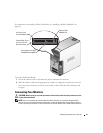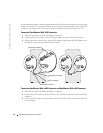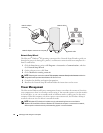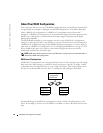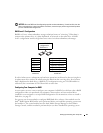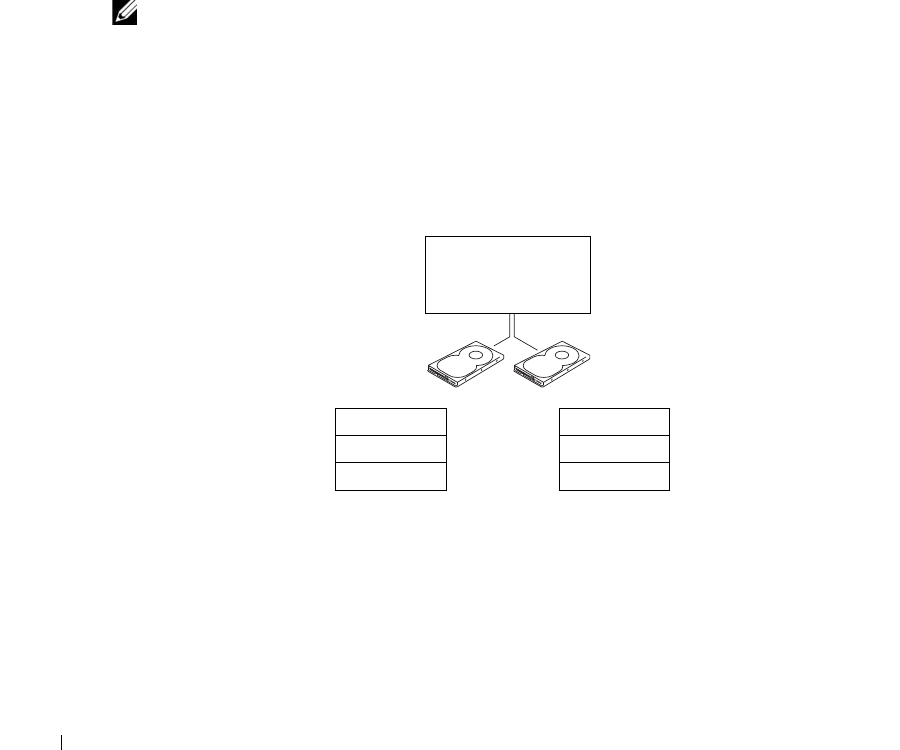
28 Setting Up and Using Your Computer
www.dell.com | support.dell.com
About Your RAID Configuration
This section provides an overview of the RAID configuration that you might have selected when
you purchased your computer. Although several RAID configurations are available, Dell offers
either a RAID level 0 configuration or a RAID level 1 configuration for its Dimension™
computers. A RAID level 0 configuration is recommended for high-performance gaming, and a
RAID level 1 configuration is recommended for the data integrity requirements of digital
photography and audio.
The Intel
®
RAID controller on your computer can only create a RAID level 0 configuration
using two or three physical drives. If a third drive is present, then that drive can be made part of
a RAID level 0 configuration using the Intel RAID configuration program, or it can be used as a
spare drive in a RAID level 1 configuration (see "Creating a Spare Hard Drive" on page 35). The
drives should be the same size in order to ensure that the larger drive does not contain
unallocated (and therefore unusable) space.
NOTE: RAID levels do not represent a hierarchy. A RAID level 1 configuration is not inherently better or
worse than a RAID level 0 configuration.
RAID Level 0 Configuration
A RAID level 0 configuration uses a storage technique known as "data striping" to provide a high
data access rate. Data striping is a method of writing consecutive segments, or stripes, of data
sequentially across the physical drives to create a large virtual drive. Data striping allows one of
the drives to read data while the other drive is searching for and reading the next block.
Another advantage of a RAID level 0 configuration is that it utilizes the full capacities of the
drives. For example, if you have two 120-GB drives installed, you have 240 GB on which to store
data.
hard drive 1
segment 1
segment 3
segment 5
hard drive 2
segment 2
segment 4
segment 6
serial ATA RAID
configured for
RAID level 0




